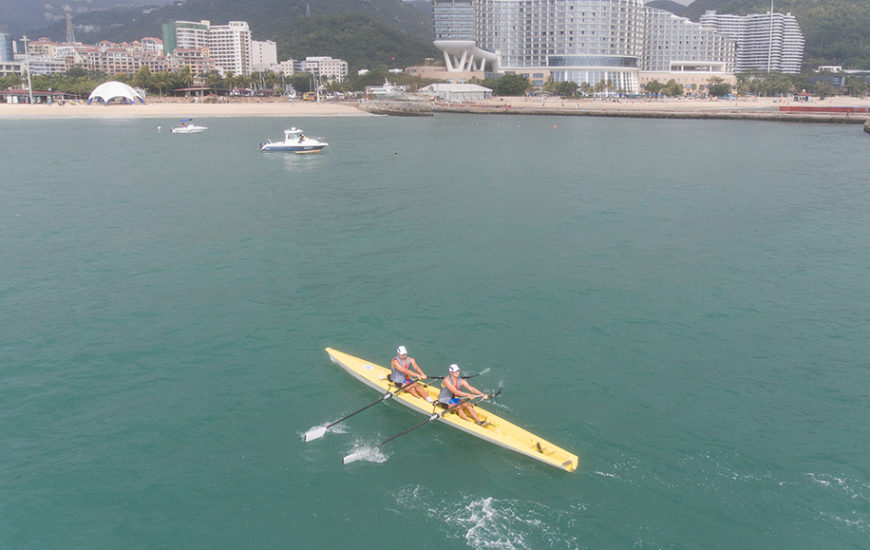
Coastal rowing is the extreme version, the adventure side of rowing. It involves rowing along a sea coast and out into the sea and is one of the fastest growing communities of rowers. It is especially popular in Italy, France and Great Britain to name a few. It can be found in all corners of the world including the Maldives and many parts of Africa. Coastal rowing boats are also used inland on some lakes and rivers where the water tends not to be flat.
Rowing on rough water means that coastal rowing is quite different from the flat-water Olympic style of going in a straight line. Coastal rowers instead, often prefer rough water which adds a whole new dimension to the sport with many coastal rowers cherishing the exhilarating aspect of rowing in extreme conditions.
Olympic rower Lassi Karonen (SWE) rowed at the 2013 World Rowing Coastal Championships and described the feeling, “The similarity (with flat-water rowing) is the movement of the stroke, everything else is different.”
Coastal rowing is easier to learn than flat-water rowing, due partly to the stability and robustness of coastal rowing equipment which differs from the Olympic-style boats. The standard boats are singles (or solo), doubles and coxed quadruple sculls. But just knowing how to handle a coastal rowing boat is not sufficient to become a good coastal rower. Crews must be aware of tides and currents, learn about the course’s topography and know what to do in the midst of maritime traffic and in case of bad weather.
